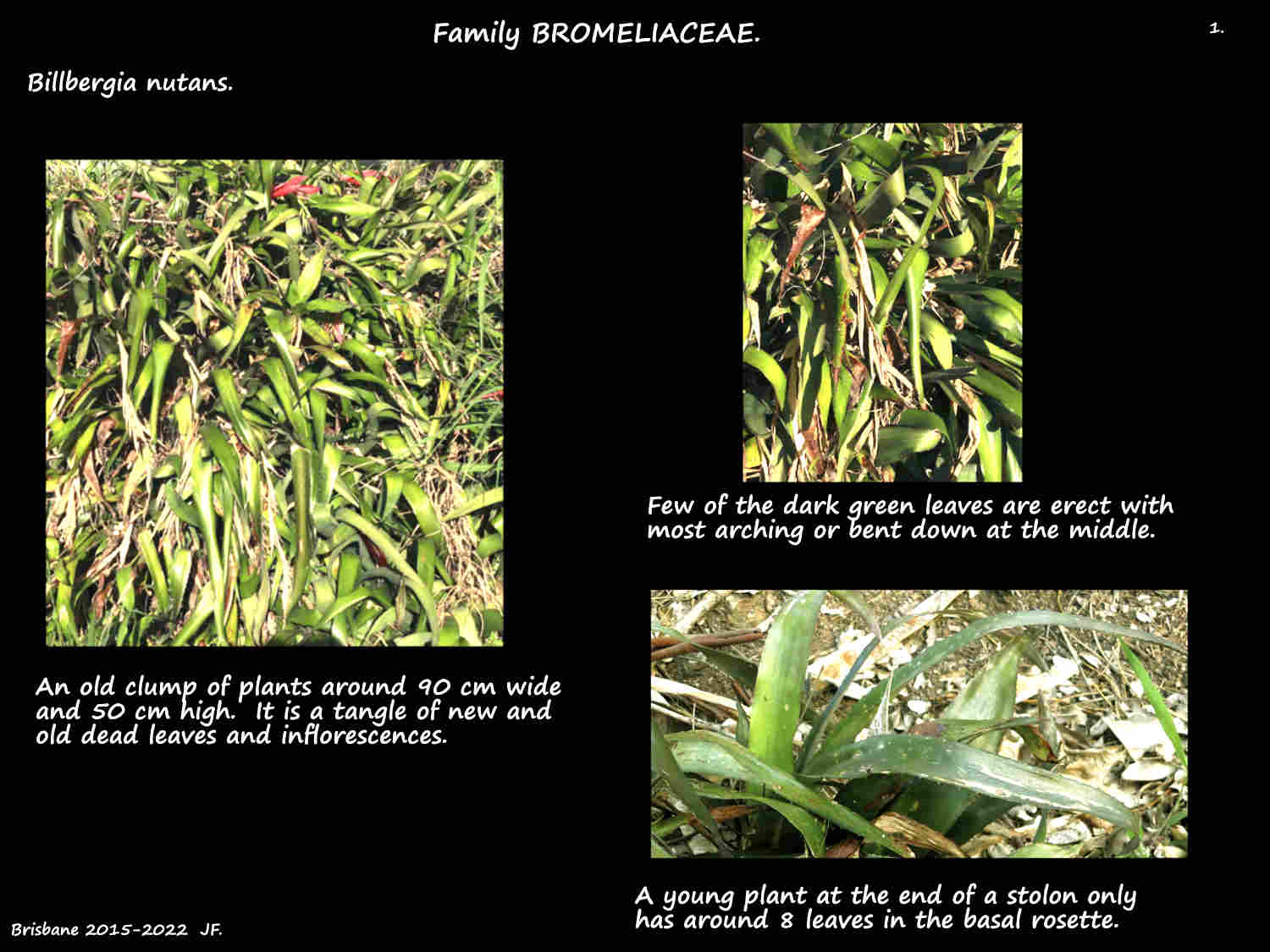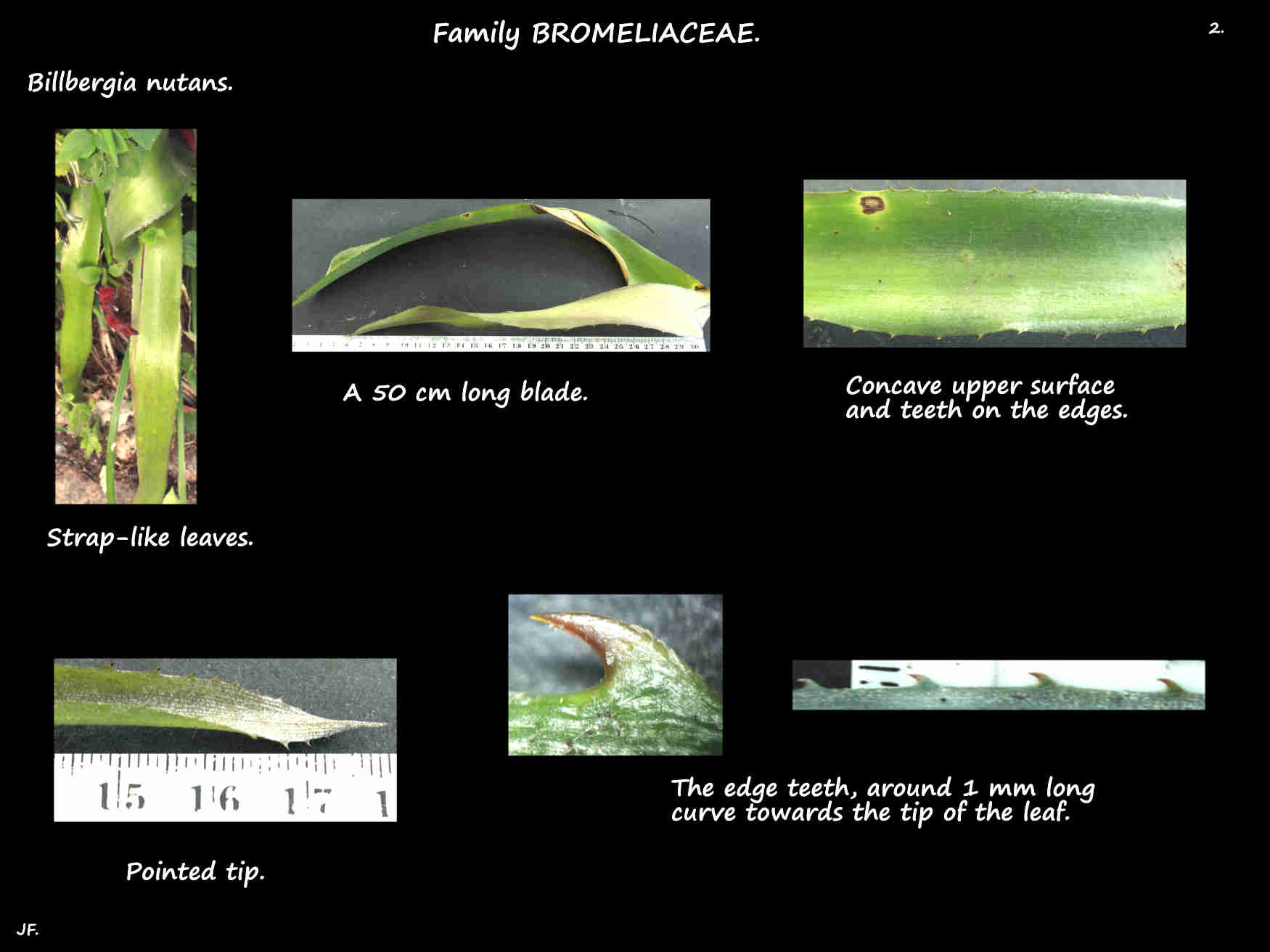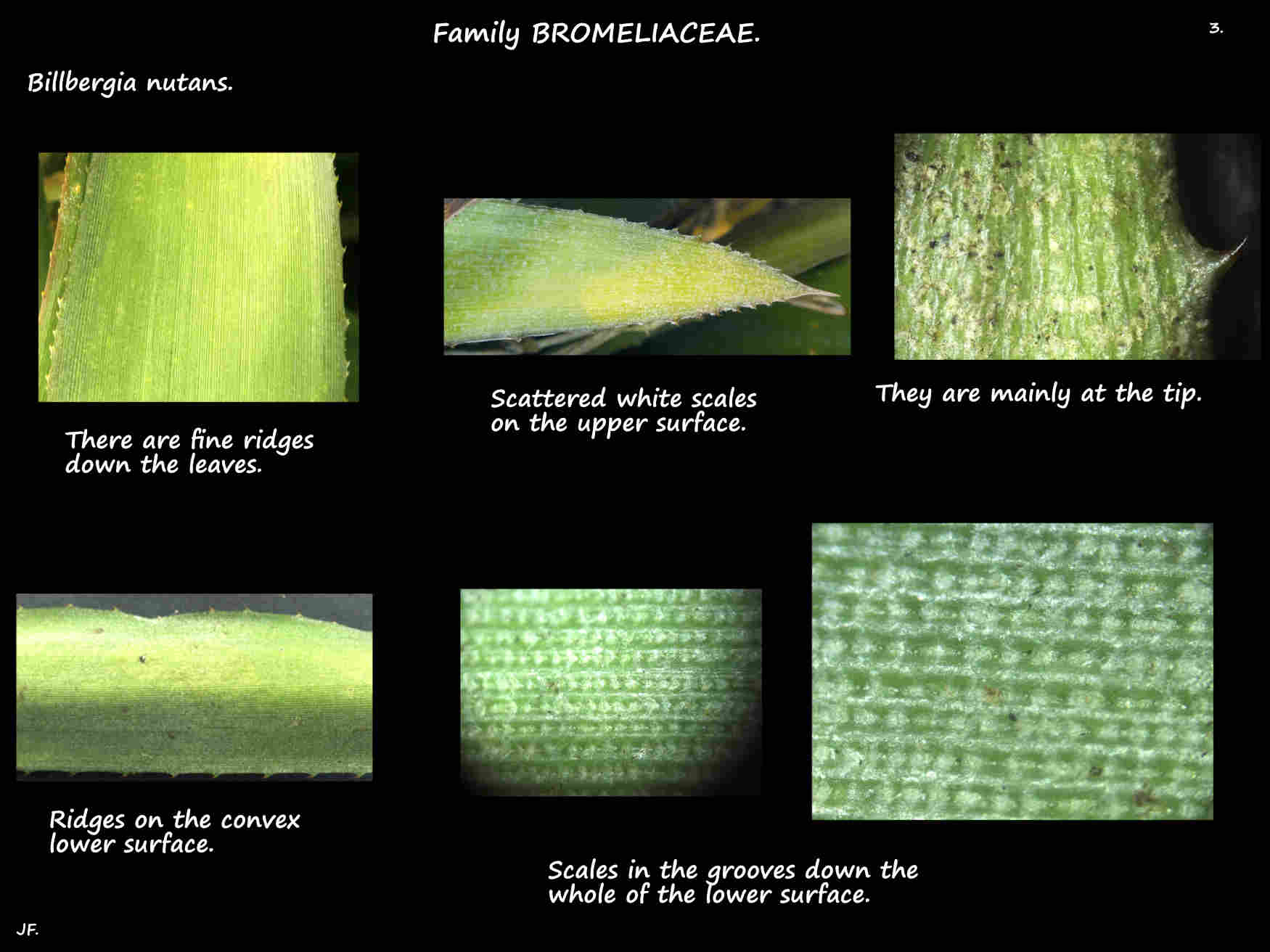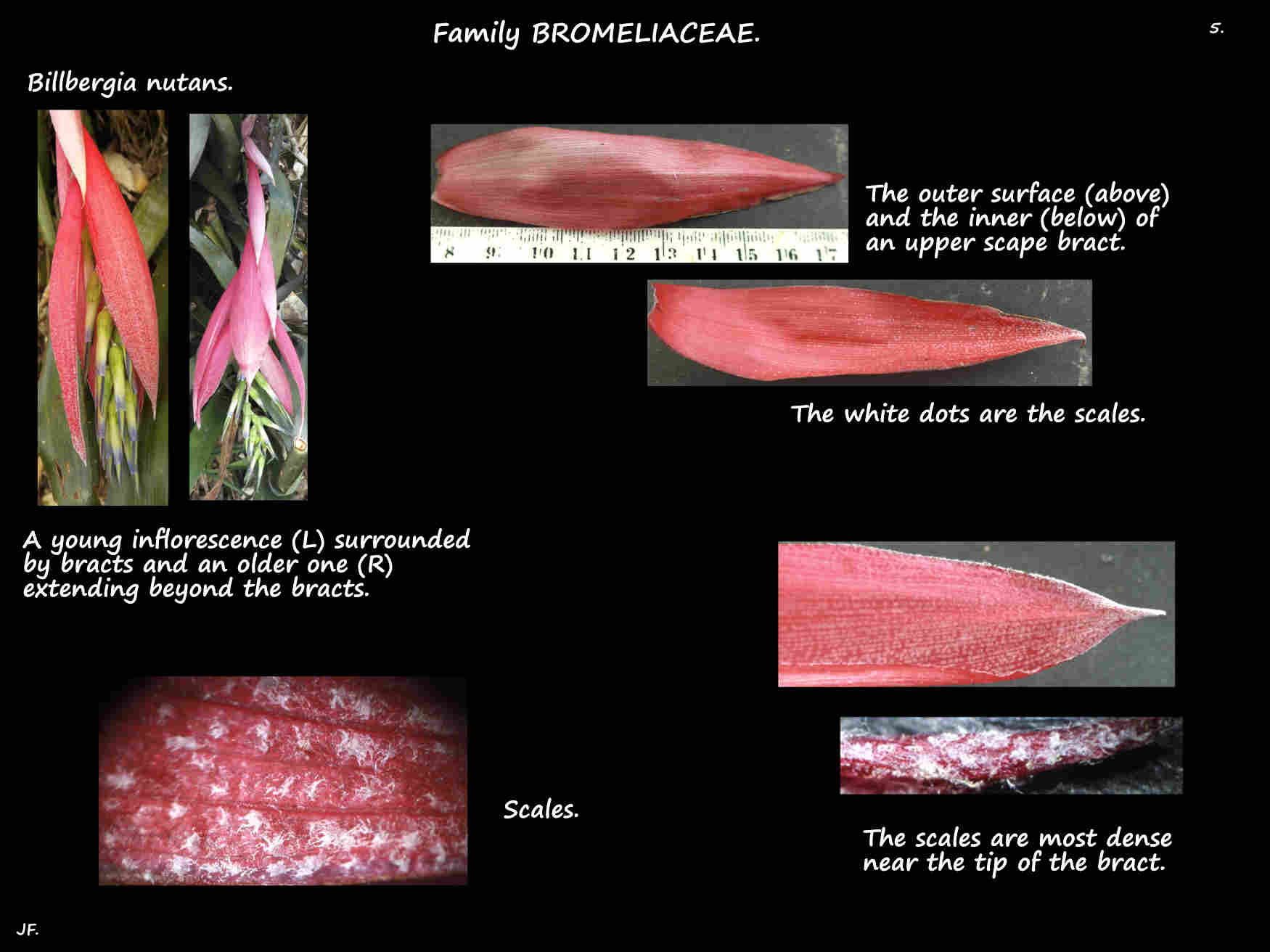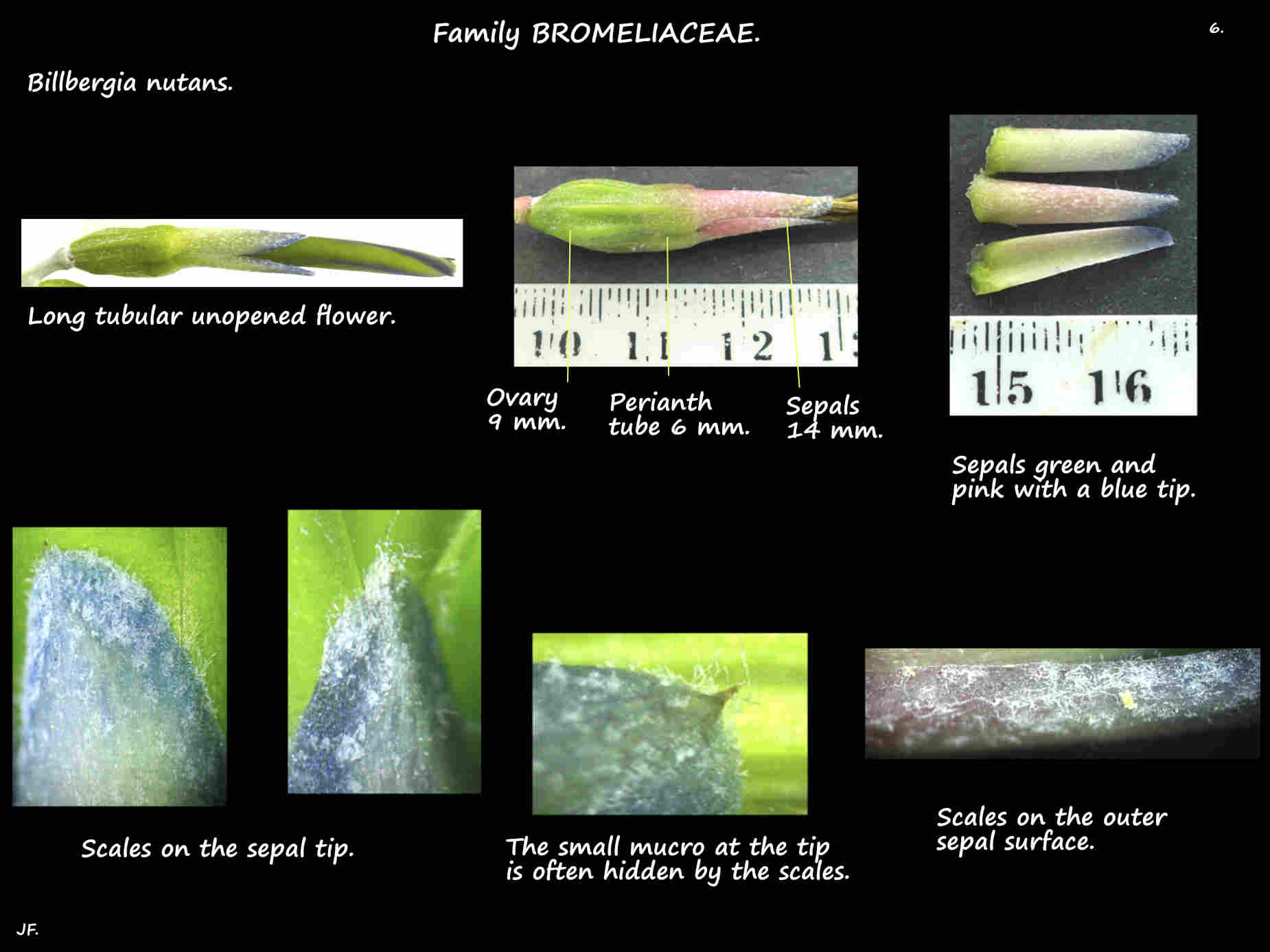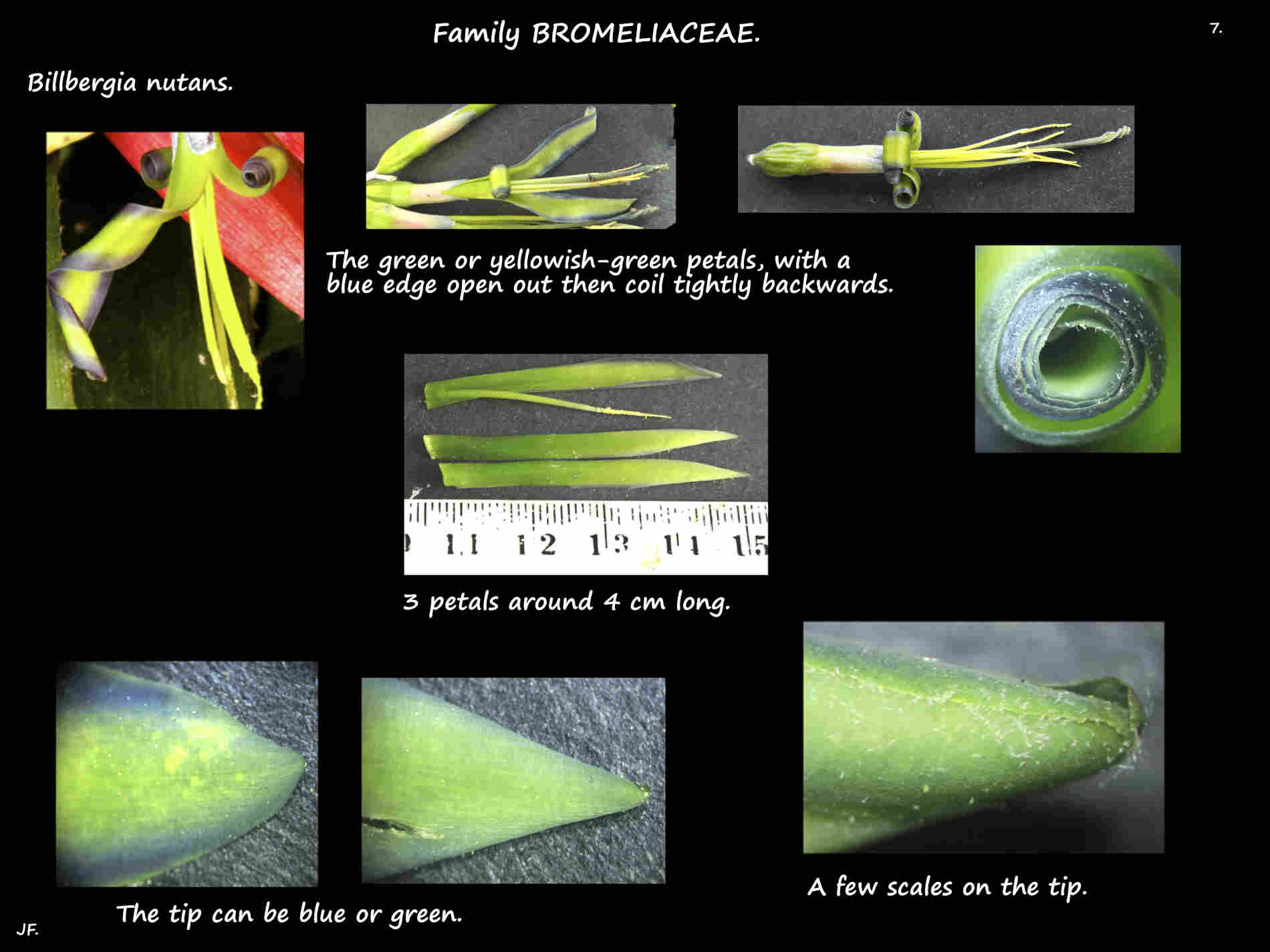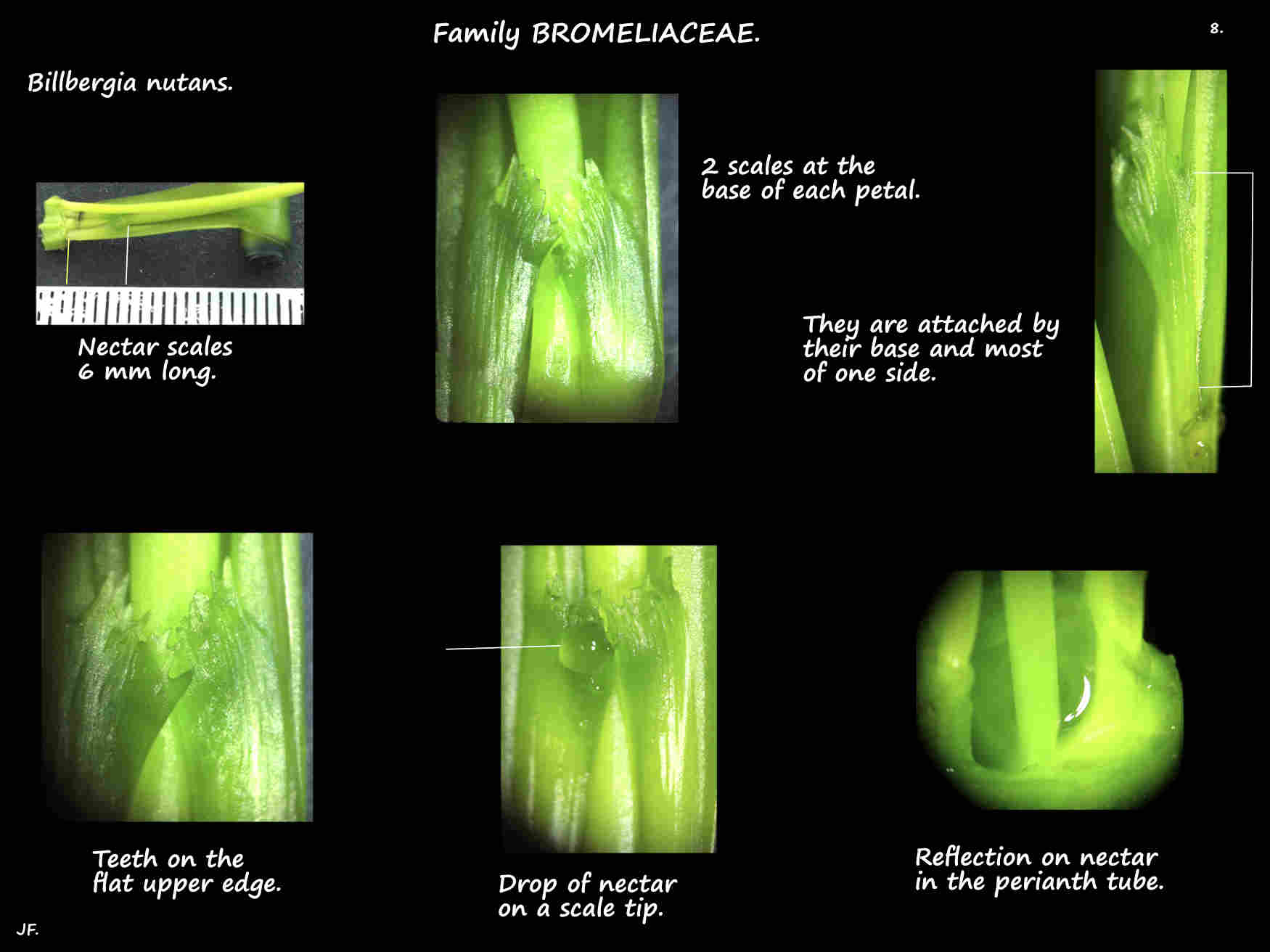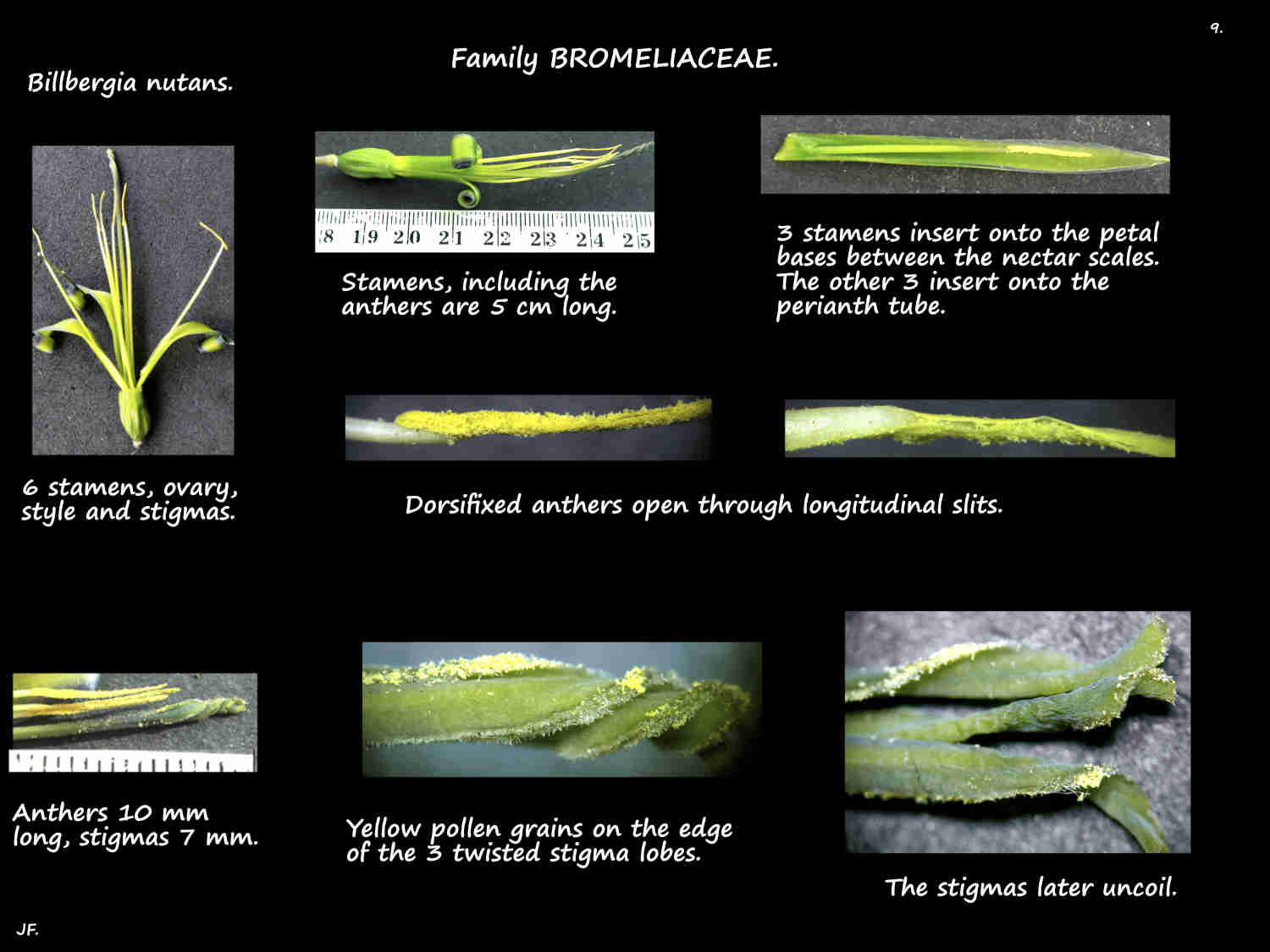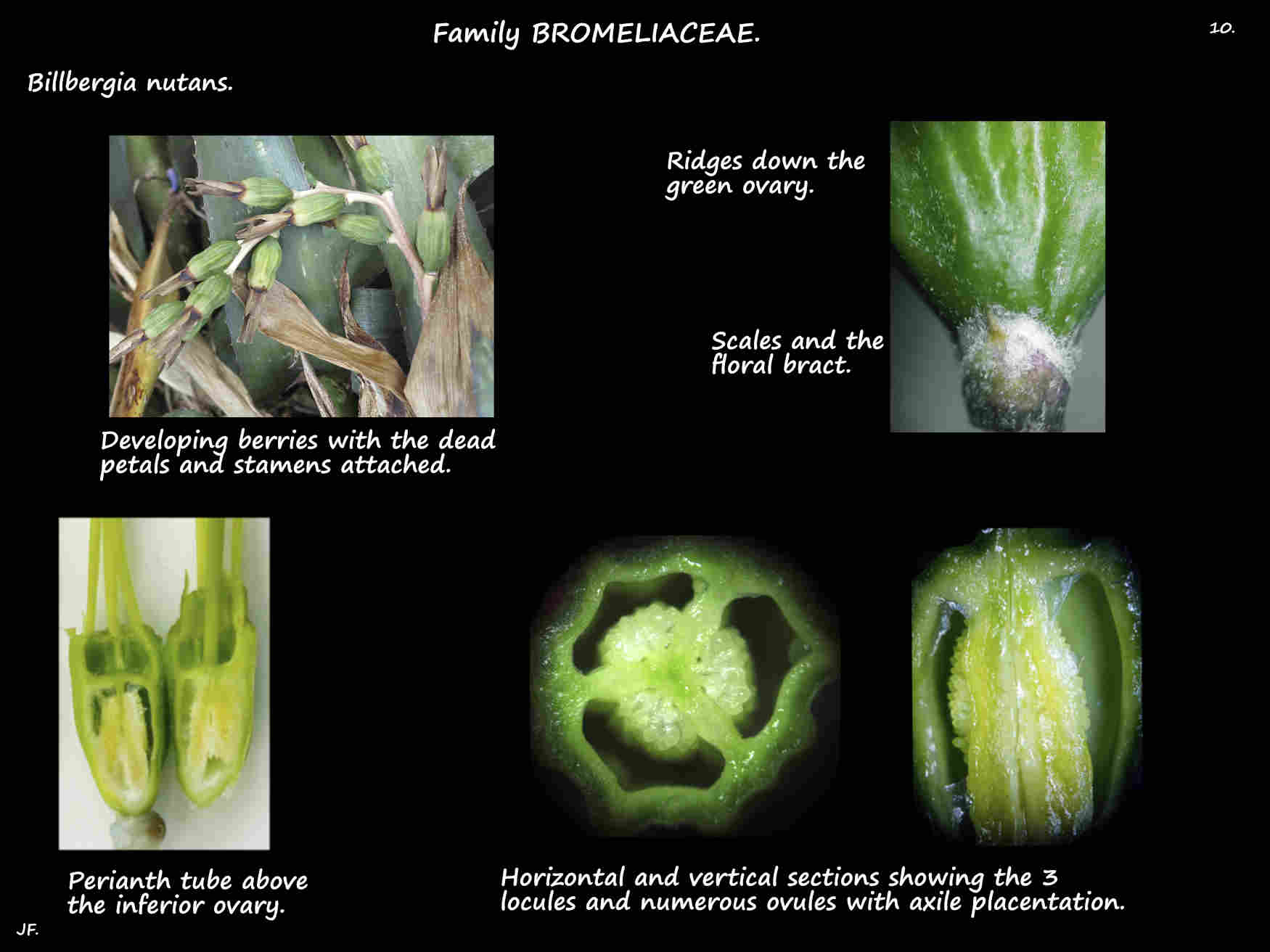Billbergia nutans.
Synonyms, according to POWO are Billbergia amandae, B. linearifolia, B. minuta, B. nutans f. rupestris,
B. nutans var. schimperiana, B. nutans var. striata, B. schimperiana and B. schimperiana f. rupestris.
They are sometimes known as ‘Queens Tears’ because of the amount of nectar they produce.
Billbergia nutans is epiphytic but is often seen growing on the ground.
They form large dense clumps with new plants developing at the end of the stolons (horizontal above ground stems).
The dark green linear leaves form a basal rosette with their sheaths fitting tightly together.
The inner leaves are almost erect and with the sheaths form a vase-like tube that can hold water.
The outer leaves are semi-erect but often bend down from about the middle.
The blades can be up to around 70 cm long and 3 to 4 cm wide.
The tip tapers to a point and there are 1 mm long curved spines on the edge.
The sides of the blade curve up making the upper surface concave.
Running lengthwise are very fine close ridges.
In the shallow grooves are white scale or trichomes mainly on the lower surface.
The terminal inflorescence is a loose drooping spike of flowers on a leafless scape.
The greenish to pale red scape, around 40 cm long is covered by overlapping elliptical to lanceolate bracts.
The scape bracts, up to 10 cm long have white scales that are most dense around the pointed tip.
The midrib or rachis of the pendant spike holds around 12 flowers.
It is pale red except towards the tip where it is a pale whitish-green.
The flowers, around 6 or 7 cm long are on a pedicel only a few mms long.
At the top of each pedicel is a dense clump of white scales.
These scales may completely obscure the tiny triangular floral bracts.
The dark bracts, 1 to 2 mm long have a pointed tip.
The narrow tubular flowers have 3 sepals alternating with 3 petals.
The bases of the sepals and petals are fused forming a tube above the inferior ovary.
A few mms long it is referred to as an epigynous or perianth tube.
The overlapping lanceolate sepals are 1.5 to 2 cm long and 4 mm wide at the base.
They are pink or green with a pointed blue tip.
There may be white scales on the outer surface mainly at the end where they may hide the small mucro (abrupt pointed tip).
Until the flower is mature the petals remain rolled longitudinally forming a narrow tube.
The petals then open out and are straight for a short period then each curls backwards into a tight coil.
Petals are green to yellow-green with a blue border that narrows towards the tip which may be green or blue.
There are a few microscopic hairs on the petal tips.
On the inner surface of each petal, at the base are 2 nectary scales.
Roughly rectangular and up to 1.5 cm long they are attached to the petal by their the base and along one side.
They are green and the flat top has large blunt teeth.
They produce a lot of nectar which collects on top of the ovary and seeps out between the perianth segments.
There are 6 stamens in 2 whorls.
In the outer whorl they insert onto the base of a petal between the scales.
The inner whorl they attach just below the top of the inner surface of the perianth tube.
The green to yellow filaments are just over half the length of the petals.
The bright yellow linear dorsifixed anthers are nearly 1 cm long.
They, and the stigmas are very prominent when the petals curl up.
The green inferior ovary, around 1 cm long is on a short stalk.
There are vertical grooves running down it.
Each of the 3 locules has numerous ovules with axile placentation.
The single style, 4 to 4.5 cm long has 3 stigma lobes around 6 mm long.
The dark blue-green lobes are initially twisted together but separate when the flower is mature.
The fruit are berries.
J.F.
